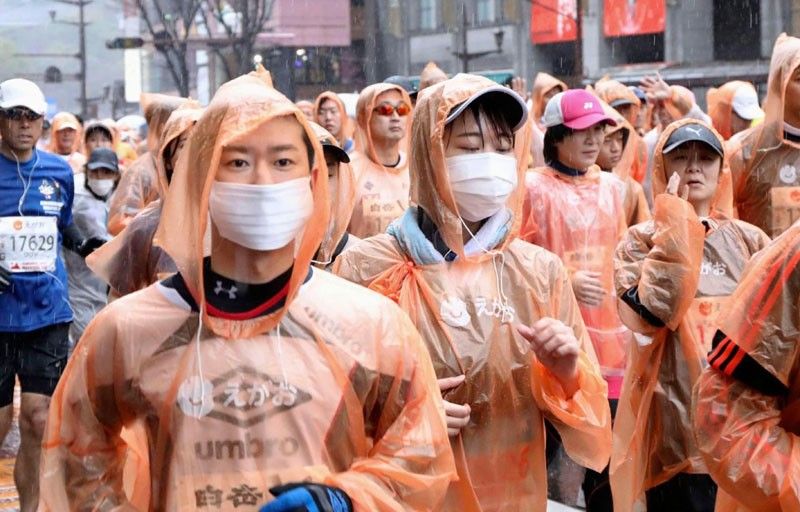Prolonged use of facemasks, gloves & PPEs may cause severe skin reactions


We are all aware that health workers are at the front lines of any outbreak response, and as such are exposed to the hazards that put them at risk for infection.
Hazards include not only pathogen exposure but also long working hours, psychological distress, fatigue, occupational burnout, stigma, physical and psychological violence. And this fight against COVID-19 has added another problem, which are skin reactions caused not only by gloves but also other PPE such as gowns, respirator masks, face shields and goggles.
The N95 respirator masks are made of polypropylene fabric processed by a non-woven technology and are supposed to fit tightly to be effective. Thirty-five percent of the staff who’ve used N95 masks have regularly experienced acne, facial dermatitis and pigmentation of the nasal bridge, cheeks and chin.
In this study, acne was one of the most prevalent skin reactions related to the use of N95 respirator masks. The dermatitis that often presented with itchy skin lesions was mostly of the irritant type, but allergic contact dermatitis (ACD) due to adhesives or other parts of the masks such as rubber straps and metal slips was also reported.
Factors like humidity, the warm environment and occlusion due to local pressures would explain the worsening of these conditions. Urticarial facial eruption was also reported in three patients, dermatitis in five patients and acute respiratory symptoms in two patients who used N95 masks in Canada during the SARS epidemic.
The findings of 542 healthcare workers have demonstrated symptoms including burning, itching, stinging, reddening, papules (umbok-umbok), maceration and scaling on the nose bridge, cheeks, forehead and hands.
Due to long-term glove use occluding the skin and causing a moisture imbalance, coupled with excessive hand-cleansing irritation, maceration, erosion and dermatitis are surfacing, too. One nurse complained that during her shift, her skin broke down and she was bleeding from the bridge of her nose. She was sent home but will be redeployed as soon as her nose is fully healed.
Breaks in a healthcare professional’s skin integrity can increase the risk of breaching infection-control policy (itching and premature removal of PPE), and can lead to a decrease in work productivity and absence from work.
During the 2003 Severe Acute Respiratory Syndrome (SARS) outbreak, a study in an acute-care hospital in Singapore found that staff who used masks regularly reported acne (59.6 percent), facial itching (51.4 percent), and rashes (35.8 percent) from N95 mask use. Additionally, staff reported dry skin (73.4 percent), itching (56.3 percent), and a rash (37.5 percent) related to prolonged glove usage.
In an upcoming editorial for “Wound Management and Prevention,” Dr. Gefen stresses that skin failure under a medical face mask will be a portal for the coronavirus to penetrate the body and will also allow other hospital-acquired bacterial, viral or fungal infections to take hold.
Here’s a summary of key recommendations:
• Perform your daily hygiene routine followed by skin moisturization (consider the use of an acrylate polymer and/or dimethicone based cream.
• Moisturizers should be applied to areas of greater surface contact (ears, forehead, nose and cheekbone area) with PPE.
• Moisturize hands regularly and ensure they are clean and dry prior to donning gloves so as not to interfere with the PPE’s efficacy and sealing of the area.
• Ensure the proper fit of PPE (there should be no discomfort at any specific point of contact between the skin and any device you are putting on).
• Use appropriate dressing material in the interface between PPE and the skin.
• Wash and dry the face, specifically in the places where the dressing material will be applied.
• Cut and adjust the material to the application site.
• The material and PPE interface should be checked on a regular basis to ensure the best fit.
• Apply the interface to the skin without tension to avoid medical adhesive-related skin injury.
• Assess that the fit is good after applying PPE, verifying the PPE seal and ensuring there are no areas of additional pressure.
•PPEs should be removed and pressure areas relieved every four hours.
• Once the PPE becomes wet or soiled, it must be changed immediately.
• Once the PPE has been removed, any dressings should be carefully removed and the skin inspected.
•After hand washing, take a bath using mild soap and water with special attention to areas under pressure. Do not rub these areas, as this may increase tissue damage.
• Dry the face and body then apply moisturizer to affected areas only. If skin breakdown is present, dressings may be required and a visit to the dermatologist may be necessary.
Healthcare professionals need to optimize hydration and nutrition to ensure skin health and a balanced physiological response.
* * *
For questions or inquiries, call 0917-497-6261, 0999-883-4802, 8401-8411, or email gc_beltran@yahoo.com.


















